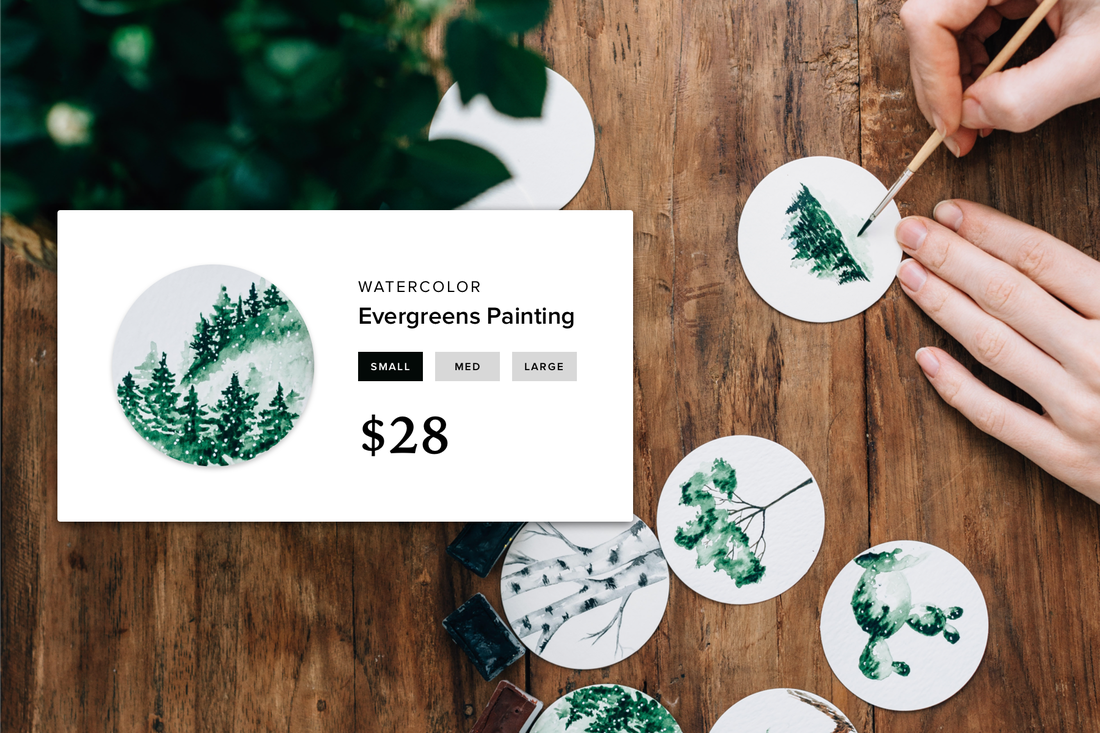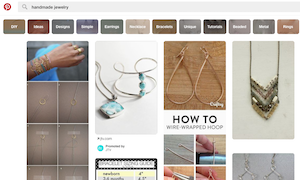Pricing your products seems straightforward: calculate manufacturing costs and then add a certain percentage on top of that. Profit! If only it were that simple. You have competitors to consider, overhead beyond just manufacturing, and likely possess a human body that requires food in order to continue existing. How can you balance all that?
Pricing needs to be part of a larger strategy that connects to your overall brand. Are you targeting the high-end? Are you a budget seller? Are you entering an established market where customers already have an expectation for how much products in your market should cost? Whatever the situation, it probably won't be enough to just say to yourself, “this price seems fair." Some deeper planning will be necessary to ensure you have competitive pricing.
What are some pricing strategies worth considering for your own business?
What are some pricing strategies worth considering for your own business?
Keystone Pricing
The simplest pricing strategy is Keystone Pricing. All you do in this case is take your manufacturing or wholesale costs, and then use the magic of multiplication to double them. You pay $20 for something, you charge $40 for it. Everyone wins.
Except, potentially, for you, because while working out your Keystone Pricing is a great place to start, it also barely qualifies to be described as a strategy. Thanks to many of the reasons listed in the opening paragraphs of this article, it's unlikely to be the best possible approach for all of your products (or even any). If you take this simple approach you may end up charging too much or too little to properly appeal to your audience.
One of the best ways to determine this is to look at competitor pricing to decide if it'd be better to price your products Above (Premium Pricing) or Below (Economy Pricing) that competition.
Except, potentially, for you, because while working out your Keystone Pricing is a great place to start, it also barely qualifies to be described as a strategy. Thanks to many of the reasons listed in the opening paragraphs of this article, it's unlikely to be the best possible approach for all of your products (or even any). If you take this simple approach you may end up charging too much or too little to properly appeal to your audience.
One of the best ways to determine this is to look at competitor pricing to decide if it'd be better to price your products Above (Premium Pricing) or Below (Economy Pricing) that competition.
Economy Pricing
With this pricing strategy you study your competitor pricing and then make your prices lower than theirs while laughing all the way to the bank. What customer wouldn't shop with you if they'll save money doing it? This strategy has been pretty successful for Wal-Mart, after all.
Problem is, you're not a member of the Walton Family (unless you are, in which case, hello!) and your business probably doesn't have the scale to get cheaper prices from manufacturers. You may not make enough money from lower prices for this approach to be viable.
Let's consider how this would look with a product that costs $15 to manufacture and that your main competitor is selling for $30. To get attention, you start selling the same product for $25. You're still clearing $10 per sale, not too bad! You even sell more than your competitor as a result: clearing 100 to their 75. Here's the annoying part: they still made more money than you did. How's that?
75 x $15 is $1,125 while 100 x $10 is $1000.
That disparity is even higher when you consider it may have have taken less work and overhead to sell a smaller number of products.
Starting with lower prices also doesn't give you much room to maneuver if the strategy isn't working. It's easier to start high and move prices lower if a product isn't pulling in enough money than to do the reverse.
Which means it may be smarter to charge more than your competitors.
Problem is, you're not a member of the Walton Family (unless you are, in which case, hello!) and your business probably doesn't have the scale to get cheaper prices from manufacturers. You may not make enough money from lower prices for this approach to be viable.
Let's consider how this would look with a product that costs $15 to manufacture and that your main competitor is selling for $30. To get attention, you start selling the same product for $25. You're still clearing $10 per sale, not too bad! You even sell more than your competitor as a result: clearing 100 to their 75. Here's the annoying part: they still made more money than you did. How's that?
75 x $15 is $1,125 while 100 x $10 is $1000.
That disparity is even higher when you consider it may have have taken less work and overhead to sell a smaller number of products.
Starting with lower prices also doesn't give you much room to maneuver if the strategy isn't working. It's easier to start high and move prices lower if a product isn't pulling in enough money than to do the reverse.
Which means it may be smarter to charge more than your competitors.
Premium Pricing
Charging more than the competition is a time tested strategy that's worked very well for Apple, BMW and every snobby local coffee shop in town. This pricing strategy is not limited in its appeal either. Eight in 10 people say they're willing to pay more for a better customer experience.
What does it mean to provide a better customer experience? It can be more personal and hands on customer support. Better packaging. Nicer or faster shipping. Customer friendly refund policies. Study how your competition is handling the sales process. List several ways you can be better. Start doing those things. Charge more.
Regardless of whether you charge more, less or the same as your competitors in general, there are pricing strategies you can use within that larger approach.
What does it mean to provide a better customer experience? It can be more personal and hands on customer support. Better packaging. Nicer or faster shipping. Customer friendly refund policies. Study how your competition is handling the sales process. List several ways you can be better. Start doing those things. Charge more.
Regardless of whether you charge more, less or the same as your competitors in general, there are pricing strategies you can use within that larger approach.
Psychological Pricing
Practically every store on earth charges $4.99 instead of $5 or $99.95 instead of $100. This has been true for decades now. Numerous studies have noted this is at least partially due to the left-digit effect; since we read left-to-right, we pay much closer attention to the earlier digits. Other studies claim that pricing something at .99 or similarly automatically feels like a discount.
Longer prices also look more expensive, especially once you go over four digits. $1,494.99 feels like more money than $1495 at a glance, reversing the psychological benefit found when using .99 with less expensive products.
Whatever the reasoning for the effectiveness of this pricing strategy, it can't hurt to use it with your own products.
Longer prices also look more expensive, especially once you go over four digits. $1,494.99 feels like more money than $1495 at a glance, reversing the psychological benefit found when using .99 with less expensive products.
Whatever the reasoning for the effectiveness of this pricing strategy, it can't hurt to use it with your own products.
Loss-Leader Pricing
With this strategy you price a single, high-demand product at a notably low cost to drive traffic to your store safe in the knowledge that some people will buy other products while they're there. The issue is that customers may begin waiting for you have big sales before buying anything from you, so you'll probably want to limit your use of this strategy.
Price Skimming
With this vaguely malicious sounding (but not at all malicious) strategy, you price your product higher when you begin selling it and then slowly drop the price over time to make it more appealing to potential bargain hunters. This is a fairly common strategy with a product like a video game or Blu-ray release that has a built fan base that will pay a higher price to get it immediately, while other customers can be convinced to buy that same product using lower prices later on.
Decoy Pricing
If you've ever been to a fast-food restaurant or movie theater, you know that fries and popcorn and soft-drinks usually come in three sizes (sometimes more): small, medium or large. Medium and large are given similar prices to increase the perceived value of the larger, more expensive choice. Why would you get the medium when you get the large for only 25 cents more?
You don't need to sell food to make this work. If you have a series of similar seeming products for sale, you can use pricing to play them off each other and make one more appealing than the other.
Whatever strategies you end up using with your business, study the market to determine what sort of customer you're targeting. Then communicate a brand identity around those customers and devise a pricing strategy that appeals to them.
You don't need to sell food to make this work. If you have a series of similar seeming products for sale, you can use pricing to play them off each other and make one more appealing than the other.
Whatever strategies you end up using with your business, study the market to determine what sort of customer you're targeting. Then communicate a brand identity around those customers and devise a pricing strategy that appeals to them.
 Ezra Meyers Ezra is a freelance writer focused on web development, email marketing and baseball. He lives in Los Angeles, but wishes he lived in Tokyo.
Ezra Meyers Ezra is a freelance writer focused on web development, email marketing and baseball. He lives in Los Angeles, but wishes he lived in Tokyo.





